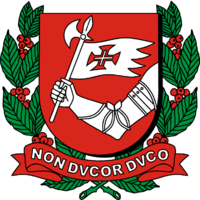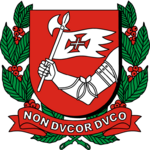Cabinet of Belmonte: Difference between revisions
No edit summary |
No edit summary |
||
| Line 24: | Line 24: | ||
The '''Cabinet of Belmonte''' ({{wp|Portuguese language|Iustian}}: ''Gabinete de Belmonte''), officially the '''Council of Ministers of the United Republic of Belmonte''' (Iustian: ''Conselho de Ministros da República Unida de Belmonte''), is the collective decision-making body of the [[Government of Belmonte]], being presided by the [[Premier of Belmonte|premier]] who draws its members from the [[National Congress of Belmonte|National Congress]]. The cabinet forms, alongside the premier and the [[President of Belmonte|president]], the {{wp|executive branch}} of the Belmontese government. | The '''Cabinet of Belmonte''' ({{wp|Portuguese language|Iustian}}: ''Gabinete de Belmonte''), officially the '''Council of Ministers of the United Republic of Belmonte''' (Iustian: ''Conselho de Ministros da República Unida de Belmonte''), is the collective decision-making body of the [[Government of Belmonte]], being presided by the [[Premier of Belmonte|premier]] who draws its members from the [[National Congress of Belmonte|National Congress]]. The cabinet forms, alongside the premier and the [[President of Belmonte|president]], the {{wp|executive branch}} of the Belmontese government. | ||
==History== | ==History== | ||
The first {{wp|Cabinet|council of ministers}} was created on the aftermath of the [[Liberal Party (Belmonte)|liberal victory]] in the [[Federalist Revolt]] and the establishment of the [[First Belmontese Republic]]. Despite being a {{wp|presidential republic}} in which the presidency was granted several powers, [[President of Belmonte|president]] [[Jorge Aranha|Aranha]] established several federal departments and institutions including the cabinet, which was composed by four ministers at the time, expanding to six before the [[1828 Coup]]. With the introduction of a {{wp|Parliamentarism|parliamentary system}} in the [[Second Belmontese Republic|Second Republic]], the cabinet would have its powers greatly expanded with the [[Premier of Belmonte|premier]] being its head under a {{wp|''primus inter pares''}} system, however, with the [[National Renovation Coup]] and [[Berquó's dictatorship|Berquó's]] rise to power in 1913, the cabinet would found itself reduced to a simple advisory council with no power whatsoever, with the [[Constitution of Belmonte|1936 constitution]] solidifying this situation by giving to the premiership presidential-like powers. | |||
==Composition== | ==Composition== | ||
[[File:Copan_ST.jpg|thumb|left|200px|The [[Aranha Building]] in central [[Castelonovo]].]] | |||
[[File:Palacio_do_Planalto_Meeting_Room.jpg|thumb|right|200px|The cabinet room, where cabinet meets every week.]] | |||
==Cabinet meetings== | ==Cabinet meetings== | ||
===Location=== | ===Location=== | ||
Revision as of 17:55, 20 November 2020
Cabinet of Belmonte Gabinete de Belmonte | |
|---|---|
28th Cabinet of Belmonte | |
| Incumbent | |
 Coat of arms of Belmonte | |
| Date formed | 05 May 2020 |
| People | |
| Head of state | Caetano Villa-Lobos |
| Head of government | Graça Fonseca |
| Deputy head of government | Aldo Calvetti |
| No. of ministers | 19 |
| Member party | Socialist Bloc Social Workers' Party Green Party |
| Status in legislature | Majority |
| Opposition cabinet | Shadow Cabinet |
| Opposition party | National Conservative Union |
| Opposition leader | João Sócrates |
| History | |
| Election(s) | 2020 |
| Predecessor | Maurino Cabinet |
The Cabinet of Belmonte (Iustian: Gabinete de Belmonte), officially the Council of Ministers of the United Republic of Belmonte (Iustian: Conselho de Ministros da República Unida de Belmonte), is the collective decision-making body of the Government of Belmonte, being presided by the premier who draws its members from the National Congress. The cabinet forms, alongside the premier and the president, the executive branch of the Belmontese government.
History
The first council of ministers was created on the aftermath of the liberal victory in the Federalist Revolt and the establishment of the First Belmontese Republic. Despite being a presidential republic in which the presidency was granted several powers, president Aranha established several federal departments and institutions including the cabinet, which was composed by four ministers at the time, expanding to six before the 1828 Coup. With the introduction of a parliamentary system in the Second Republic, the cabinet would have its powers greatly expanded with the premier being its head under a primus inter pares system, however, with the National Renovation Coup and Berquó's rise to power in 1913, the cabinet would found itself reduced to a simple advisory council with no power whatsoever, with the 1936 constitution solidifying this situation by giving to the premiership presidential-like powers.


